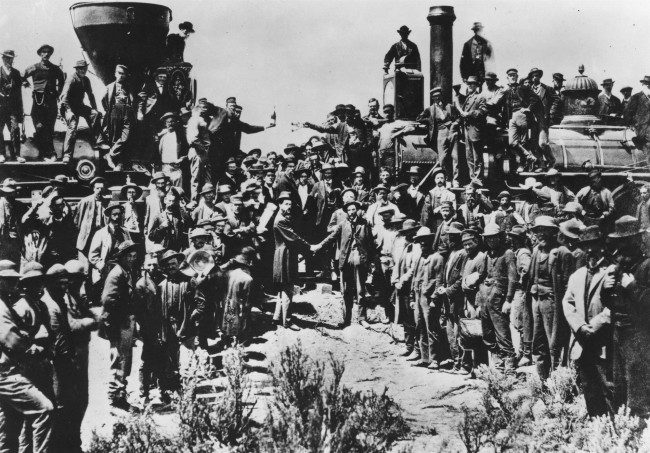Inducted 2001
The Last Spike Ceremony in the United States marked the end of one of the greatest construction projects of modern times. Dignitaries from Union Pacific and Central Pacific railroads helped hammer the final spike home as the nation “listened” via a new invention, the telegraph.
The moment was captured on film for future generations. Governor Stanford representing the Union Pacific stood on one side of the track, while Dr. Durant of the Central Pacific stood on the other side.
However, the event almost did not happen. Earlier, Union Pacific had threatened to walk away from the ceremony, but were convinced to stay after it was decided that Governor Stanford would stand on the west side of the tracks and lay the first blow, while Dr. Durant across the tracks would strike the second. This event took place 30 miles west of Ogden, Utah, in the highlands behind the town.
Telegraph operators had wrapped an extension from their telegraphs on the last spike so that the driving of the spike could be heard across the country. Every city that had telegraph fire alarms would ring to commemorate that the last spike had been driven. Beyond this, in New York and in San Francisco, the telegraph was wired to cannons which would fire out onto the Atlantic and Pacific Oceans to add to the excitement of the event.
There were many pictures taken, including the laying of the last ties, the driving of the last spike, and a picture of the two companies’ who representatives worked so hard to complete the dream. The companies had their respective locomotives touching their pilots together with the engineers and crew lined along the trains.
After the final ties were laid and the spike was driven, they were almost immediately cut up with jack-knives, carving as souvenirs from the event.


